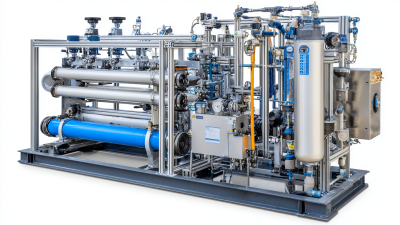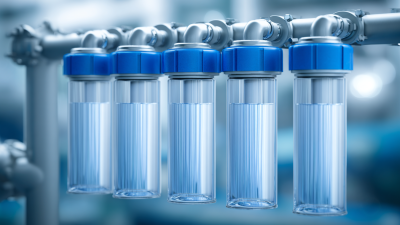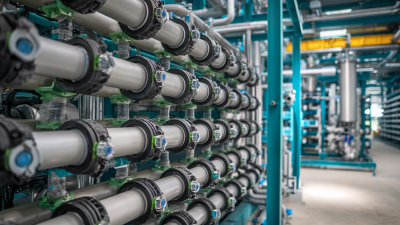Leave Your Message
Request a Quote
In the quest for pure and safe drinking water, the role of advanced filtration systems cannot be overstated. Among the leading technologies available today, the Nanofiltration Filter stands out due to its unique ability to selectively remove contaminants while retaining essential minerals. This makes it an ideal choice for those seeking high-quality water without compromising on taste or health benefits. With advancements in filtration technology, consumers are faced with an overwhelming array of options, making it crucial to identify the best solutions for their specific needs.
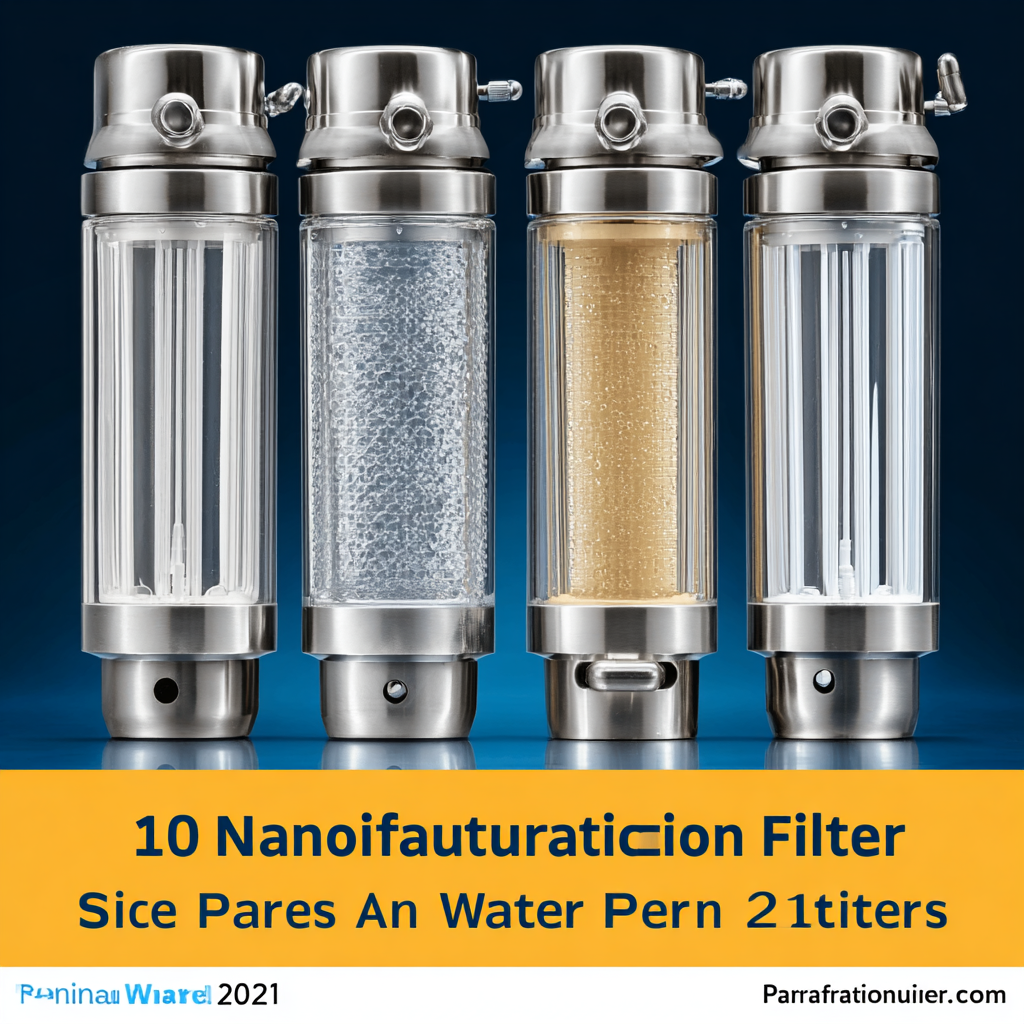
As we delve into the top contenders in the market for 2023, we will highlight the "Top 5" Nanofiltration Filters that excel in performance, efficiency, and durability. These filters not only ensure that your water is free from harmful substances but also enhance the overall quality of your drinking experience. From household use to large-scale applications, the proper choice of a Nanofiltration Filter can significantly impact your water quality. Join us as we explore the best options available, equipped with features that promise both convenience and peace of mind.
When considering the top nanofiltration filters for superior water quality in 2023, it's essential to examine the latest technologies that ensure clean and safe hydration. Nanofiltration is particularly effective in removing impurities while retaining beneficial minerals, making it a preferred choice for many households. As consumers become more health-conscious, the demand for high-quality filters that provide instant access to purified water is on the rise.
One tip when selecting a nanofiltration system is to check for certifications that guarantee the filter's efficiency and safety. Look for ratings from recognized standards organizations to ensure the filter performs as advertised. Additionally, consider the maintenance requirements and replacement costs of the filter cartridges, as these factors can significantly impact long-term usage and expenses.
Another important aspect is to evaluate the flow rate of the filtration system. A filter that dispenses water quickly can make a noticeable difference in busy households. Be sure to compare different models to find one that meets your needs without sacrificing quality. It’s also worth noting that integrating a nanofiltration system with other water dispensers can provide both convenience and optimal hydration solutions.
When selecting the best nanofiltration filters for pure and safe water, there are several key features to consider. Firstly, the membrane material plays a crucial role in determining the filter's efficiency and durability. Common materials include polyamide and polysulfone, each offering varying degrees of filtration accuracy and lifespan. It's important to choose a filter with a membrane that can effectively remove contaminants while maintaining optimal water flow rates.

Another essential aspect is the filter's rejection rate, which indicates its effectiveness in eliminating specific impurities such as hardness, bacteria, and organic compounds. Higher rejection rates generally mean better water quality, so look for filters with advanced technology that ensures thorough purification. Additionally, consider the connection and installation type to ensure compatibility with your plumbing system. User-friendly designs can significantly enhance the ease of maintenance and replacement, making the overall experience more convenient for homeowners.
To ensure optimal performance of your nanofiltration system, regular maintenance is crucial. Start by checking the system’s filters periodically, as they can become clogged over time. A thorough inspection every few months can help you identify any wear or buildup that may hinder filtration efficiency. Replace the filters as recommended by the manufacturer to maintain water quality and system functionality.
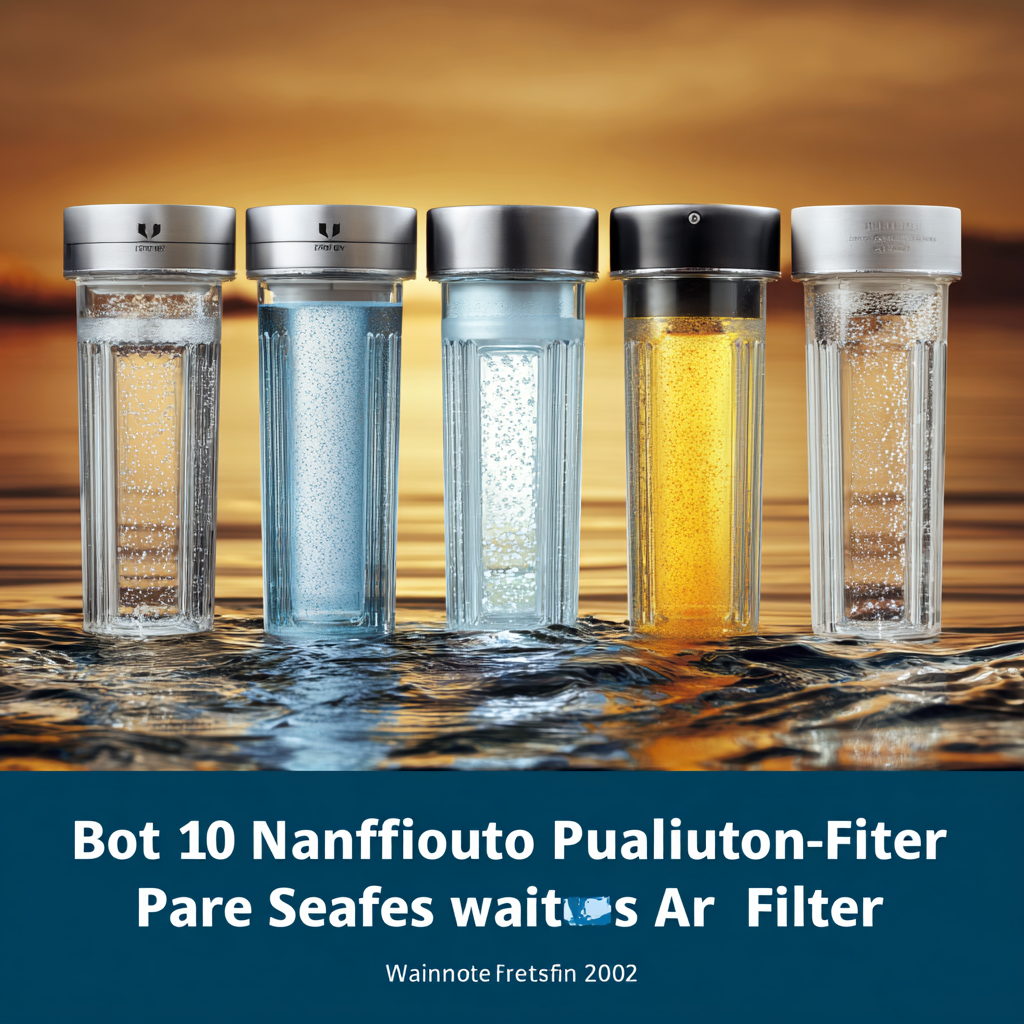
Another important tip is to monitor water pressure. Nanofiltration systems require specific pressure levels to operate effectively. If you notice a drop in pressure, it could indicate a problem with the system, such as a blocked filter or a leak. Addressing these issues promptly will prevent more significant problems and ensure your system continues providing clean, safe water.
Additionally, flushing the membranes gently can help remove any accumulated contaminants, further enhancing system longevity and efficiency.
When it comes to ensuring access to pure and safe drinking water, nanofiltration filters have emerged as a popular choice. In 2023, budget-conscious consumers can find a range of highly effective nanofiltration systems that deliver quality without breaking the bank. These filters are not only efficient at removing contaminants such as heavy metals and organic compounds, but they also retain essential minerals, making them an excellent option for maintaining a balanced diet.
Among the cost-effective nanofiltration filters available this year, some notable contenders stand out due to their affordability and performance. Many brands offer compact, easy-to-install systems that cater to various household sizes. Investing in a budget-friendly nanofiltration filter can save money in the long run by reducing reliance on bottled water and minimizing health risks associated with contaminated sources. By considering the long-term benefits and lower operating costs, homeowners can make informed decisions that prioritize both their health and finances.
Nanofiltration (NF) is a water treatment technology that lies between reverse osmosis (RO) and conventional filtration methods. While RO systems are designed to remove virtually all dissolved solids, including minerals and salts, NF selectively removes smaller contaminants, such as dissolved organic matter, pesticides, and divalent ions, while allowing monovalent ions like sodium and potassium to pass through. This characteristic makes NF particularly valuable in applications where maintaining certain mineral content in water is desired, such as in food processing or certain industrial applications.
When comparing NF to other filtration methods, it’s crucial to consider factors such as efficiency, waste production, and energy consumption. Unlike traditional filters that may only remove larger particles and sediments, NF systems provide a more refined level of purification without the high energy demands typical of RO processes. Additionally, NF generates less waste water, which is an essential consideration in areas where water resources are limited. Overall, nanofiltration presents a compelling option for those seeking effective, energy-efficient, and environmentally friendly water purification solutions.
| Filter Model | Filtration Capacity (GPD) | Contaminants Removed | Maintenance Frequency | Cost (USD) |
|---|---|---|---|---|
| Model A | 50 | Chlorine, Hardness, Taste | 6 months | $150 |
| Model B | 75 | Lead, Fluoride, Chlorides | 12 months | $200 |
| Model C | 100 | Pesticides, Heavy Metals | 6 months | $180 |
| Model D | 60 | Bacteria, Viruses | 3 months | $120 |
| Model E | 80 | Nitrate, Fluoride | 12 months | $220 |
| Model F | 90 | Hormones, Pharmaceuticals | 6 months | $250 |
| Model G | 70 | Organic Compounds | 6 months | $170 |
| Model H | 110 | Chlorine, Flouride, Lead | 12 months | $230 |
| Model I | 55 | Bacteria, Viruses | 6 months | $140 |
| Model J | 95 | Selenium, Arsenic | 12 months | $260 |

